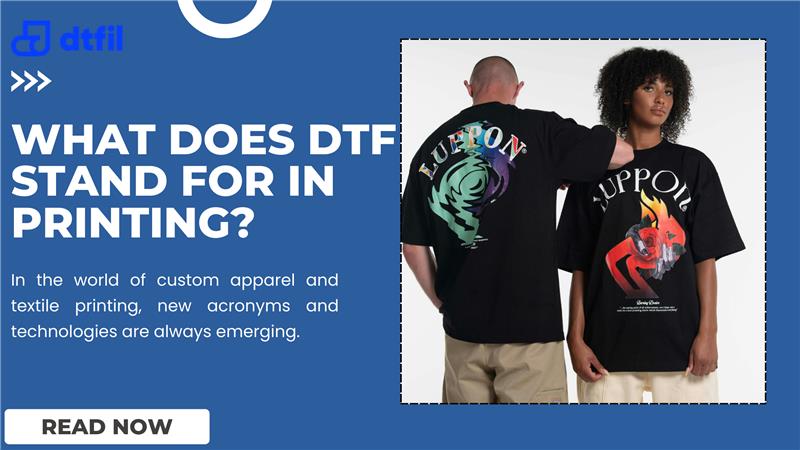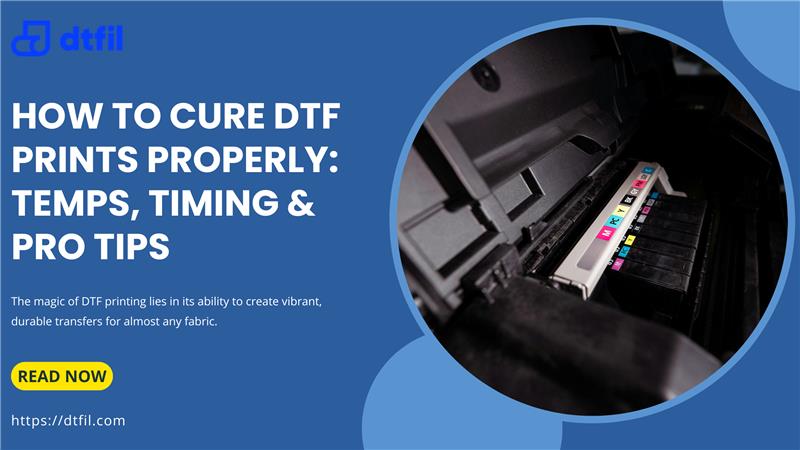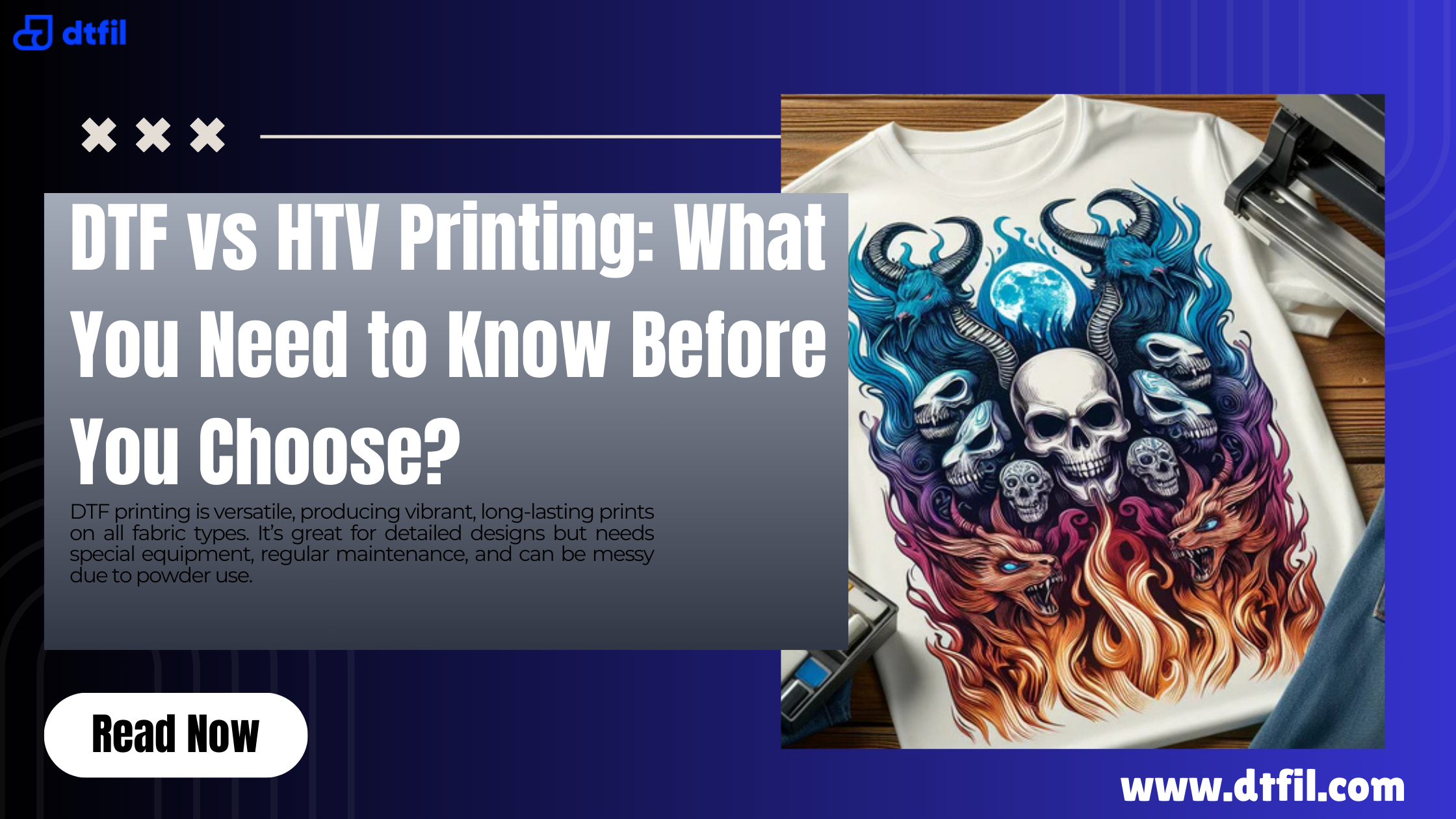Customizing t-shirts is a fun and creative way to express yourself or promote a brand. With so many types of t-shirt printing available in 2025, choosing the right one can feel overwhelming.
Whether you're curious about different types of t-shirt printing methods or wondering what is the best t-shirt printing technique, this guide breaks down the most popular shirt printing techniques, their pros, cons, and ideal uses.
From screen printing to direct-to-film (DTF) printing, we’ll cover everything in simple terms to help you decide.
Understanding the Main Types of T-Shirt Printing

The world of types of shirt printing offers options for every budget, design, and purpose. Below, we explore the top methods of printing on shirts, including their strengths and weaknesses, to guide you through various types of printing.
1. Screen Printing: The Classic Choice
Screen printing is one of the oldest and most trusted types of printing t-shirts. It involves pushing ink through a mesh screen onto the fabric, one color at a time. It’s ideal for bold, simple designs and printing methods for bulk t-shirts.
-
Pros: Durable prints, vibrant colors, and cost-effective for large orders. Screen printing shines for logos and team uniforms.
-
Cons: Setup costs are high for small runs, and complex designs with many colors get pricey. Not great for one-off shirts.
-
Best Use Cases: Bulk orders like event tees or business merch. Perfect for custom t-shirt printing techniques needing bold graphics.
Curious about the pros and cons of screen printing on shirts? It’s unbeatable for the durability of prints but less flexible for intricate patterns.
2. Direct-to-Garment (DTG) Printing: Digital Precision
Direct-to-garment (DTG) printing uses an inkjet printer to spray designs directly onto shirts, much like printing on paper. What is DTG printing t-shirts? It’s a high-tech option for detailed, full-color designs without the setup of screens.
-
Pros: Excellent print quality comparison for photos or gradients. No minimum order, making it one of the affordable printing methods for t-shirts for small runs.
-
Cons: Slower for bulk orders and less vibrant on dark fabrics. Pretreatment can affect fabric feel.
-
Best Use Cases: Small batches or custom orders with complex designs, like art prints or personalized gifts.
DTG is a top pick for those asking which t-shirt printing method lasts longer on light cotton tees, though it may fade faster on heavy wear.
3. Direct-to-Film (DTF) Printing: The Versatile Newcomer
Direct-to-film (DTF) printing prints designs onto a film, which is then heat-pressed onto the shirt. It’s gaining popularity for its flexibility across fabrics.
-
Pros: Works on cotton, polyester, and blends, making it ideal for t-shirt printing materials. Vibrant and stretchy prints with no pretreatment.
-
Cons: Slightly higher cost per print than screen printing for bulk. Film texture may feel less soft than DTG.
-
Best Use Cases: Small to medium runs, especially for dark fabrics or mixed materials. Great for t-shirt transfer design needs.
When comparing DTF vs sublimation printing or DTF vs screen printing, DTF wins for its ability to handle diverse fabrics without heavy setup.
4. Sublimation Printing: Vibrant for Polyester
Sublimation printing dyes ink into polyester or poly-blend fabrics, creating all-over designs. It’s a favorite for sportswear and bold patterns.
-
Pros: Super vibrant and permanent prints that won’t crack. Ideal for the best use cases for heat transfer printing on synthetic fabrics.
-
Cons: Limited to polyester or high-poly blends, not cotton. Initial equipment costs can be high.
-
Best Use Cases: Athletic wear, all-over designs, or fashion tees where cost-effectiveness in t-shirt printing matters for poly fabrics.
Is DTF or sublimation printing better? Sublimation excels for polyester, but DTF is more versatile across fabric types.
5. Heat Transfer Vinyl (HTV): Cut and Stick
Heat transfer vinyl (HTV) involves cutting designs from colored vinyl sheets and pressing them onto shirts. It’s simple and effective for basic graphics.
-
Pros: Great for single-color logos or text. Durable and quick for small orders.
-
Cons: Limited to simple designs; multi-color projects get tricky. Vinyl can feel stiff on stretchy fabrics.
-
Best Use Cases: Names, numbers, or logos on sports jerseys or small-batch tees.
HTV is a solid choice for those exploring ways to print on shirts without investing in a tee printing machine.
6. Embroidery: A Premium Alternative
While not printing, embroidery vs printing deserves a mention. It stitches designs directly into fabric, offering a high-end look.
-
Pros: Professional and durable, perfect for logos on polos or caps. Long-lasting, even with frequent washing.
-
Cons: Expensive for large designs and not suited for detailed graphics or gradients.
-
Best Use Cases: Corporate apparel or branding where texture adds value.
Embroidery complements types of apparel printing when you want a classy, non-printed option.
Also Read: How to Cure DTF Prints Properly: Temps, Timing & Pro Tips
Comparing Durability, Cost, and Eco-Friendliness

When picking the best type of shirt printing, consider the durability of prints, cost, and sustainability. What type of t-shirt printing lasts the longest? Screen printing and sublimation top the list for longevity, with DTF close behind if applied correctly. DTG fades faster on heavy use, while HTV holds up but may peel over time.
For cost, screen printing is the best way to print shirts for bulk orders, think 50+ tees, due to low per-unit costs. DTG and DTF are more affordable printing methods for t-shirts in small quantities, while sublimation and HTV balance cost for specific niches.
Eco-friendly t-shirt printing options are trending in 2025. DTG and DTF can use water-based inks, reducing environmental impact compared to traditional screen printing, which involves chemical emulsions. Sublimation cuts water waste but is limited by fabric type. Look for t-shirt transfer company suppliers offering sustainable t-shirt printing materials to green your process.
Choosing the Right Method for Your Needs
So, which type of print is best for a t-shirt? It depends on your goals:
-
Bulk Orders: Go for screen printing to save money and ensure the durability of prints.
-
Detailed Designs: DTG or DTF for photorealistic art or small runs.
-
Polyester Fabrics: Sublimation printing for vibrant, all-over designs.
-
Simple Graphics: HTV for quick, bold logos or names.
-
Premium Look: Embroidery for upscale branding.
Consider fabric too. Different types of printing on shirts work better on certain materials. DTF handles most, while sublimation needs poly. For types of shirts like cotton tees, DTG or DTF are top picks. Press t-shirt designs with a reliable heat press for the best results across methods.
In 2025, print types will evolve with tech. T-shirt printing machine options are more affordable, letting small businesses test different types of printing on shirts. Even types of printing on paper share tech with DTF, showing how versatile these systems are.
Tips for Success
-
Test First: Run samples to check color and adhesion, especially for t-shirt transfer design.
-
Quality Materials: Invest in good inks and films from a trusted t-shirt transfer company.
-
Care Instructions: Wash inside-out to extend print life, no matter the method.
-
Stay Updated: New shirt printing techniques pop up yearly; follow industry blogs for trends.
Final Thoughts
Navigating the types of t-shirt printing opens up endless creative possibilities. Whether you’re launching a merch line or crafting gifts, understanding the kinds of shirt printing helps you pick the perfect fit.
For top-quality transfers, inks, and gear to kickstart your journey, check out Chameleon Transfers. Their range of DTF and HTV supplies makes custom printing accessible and fun. Ready to print your masterpiece? Explore DTFIL for your next DTF t-shirt print.
FAQs
Q: Which type of print is best for a t-shirt?
It depends on your needs: screen printing for bulk durability, DTG for detailed small runs, DTF for versatility, sublimation for polyester vibrancy, or HTV for simple designs. Consider fabric, budget, and design complexity.
Q: Is DTF or screen printing better?
Screen printing is better for large orders with simple designs due to cost and durability. DTF excels for small runs, complex designs, and diverse fabrics without setup hassles.
Q: What are the 4 types of printing?
The main types of t-shirt printing are screen printing, direct-to-garment (DTG), direct-to-film (DTF), and sublimation. Heat transfer vinyl (HTV) is also popular, though technically a transfer method.
Q: What is DTG printing on t-shirts?
DTG printing sprays ink directly onto shirts using an inkjet printer, ideal for detailed, full-color designs on cotton. It’s great for small batches but may need pretreatment for dark fabrics.
Also read more related blogs:
How to Print Own T-Shirts Using DTF Printing: Step-by-Step Guide







